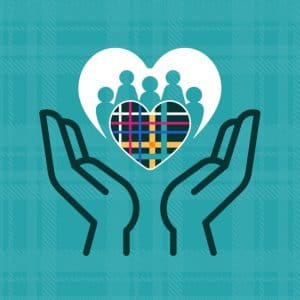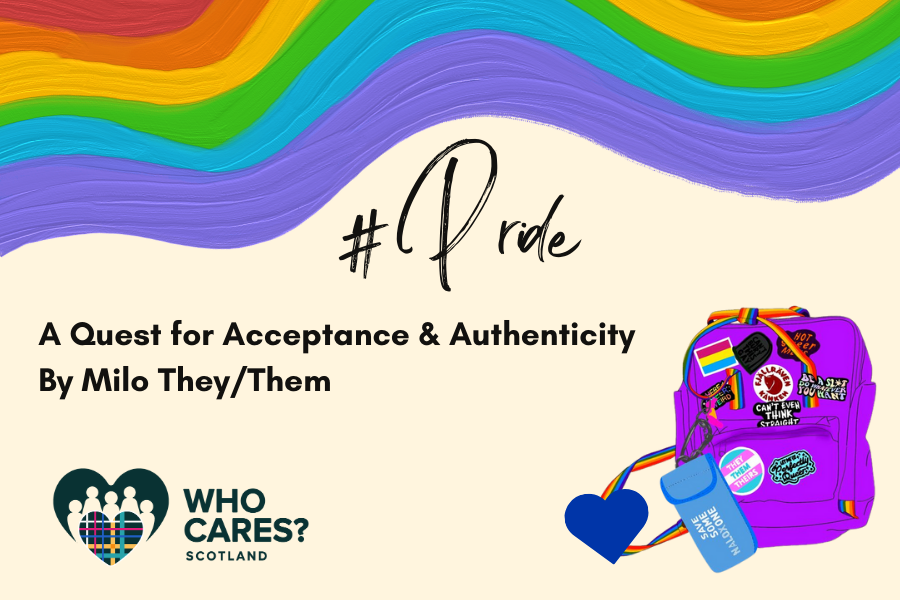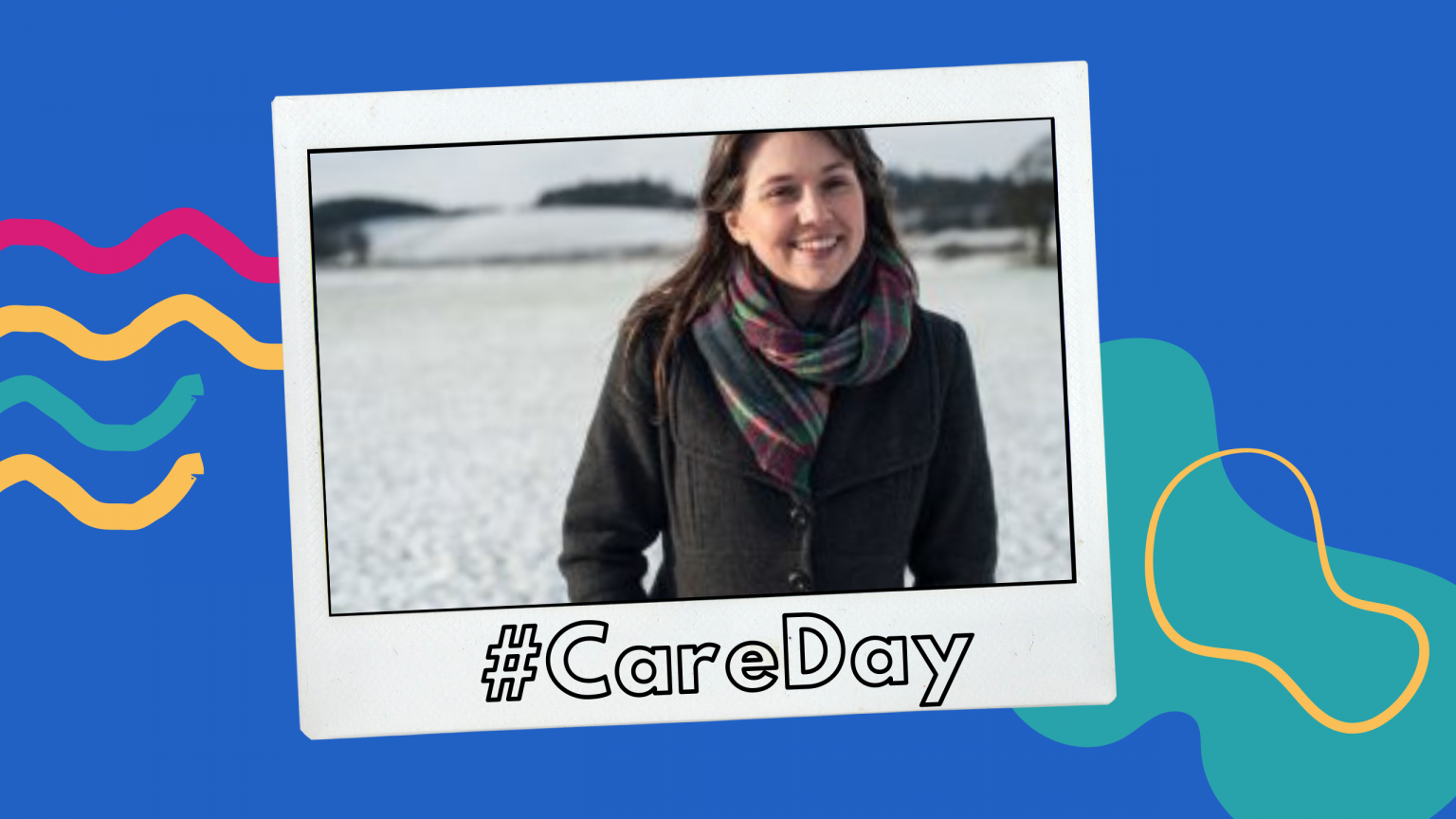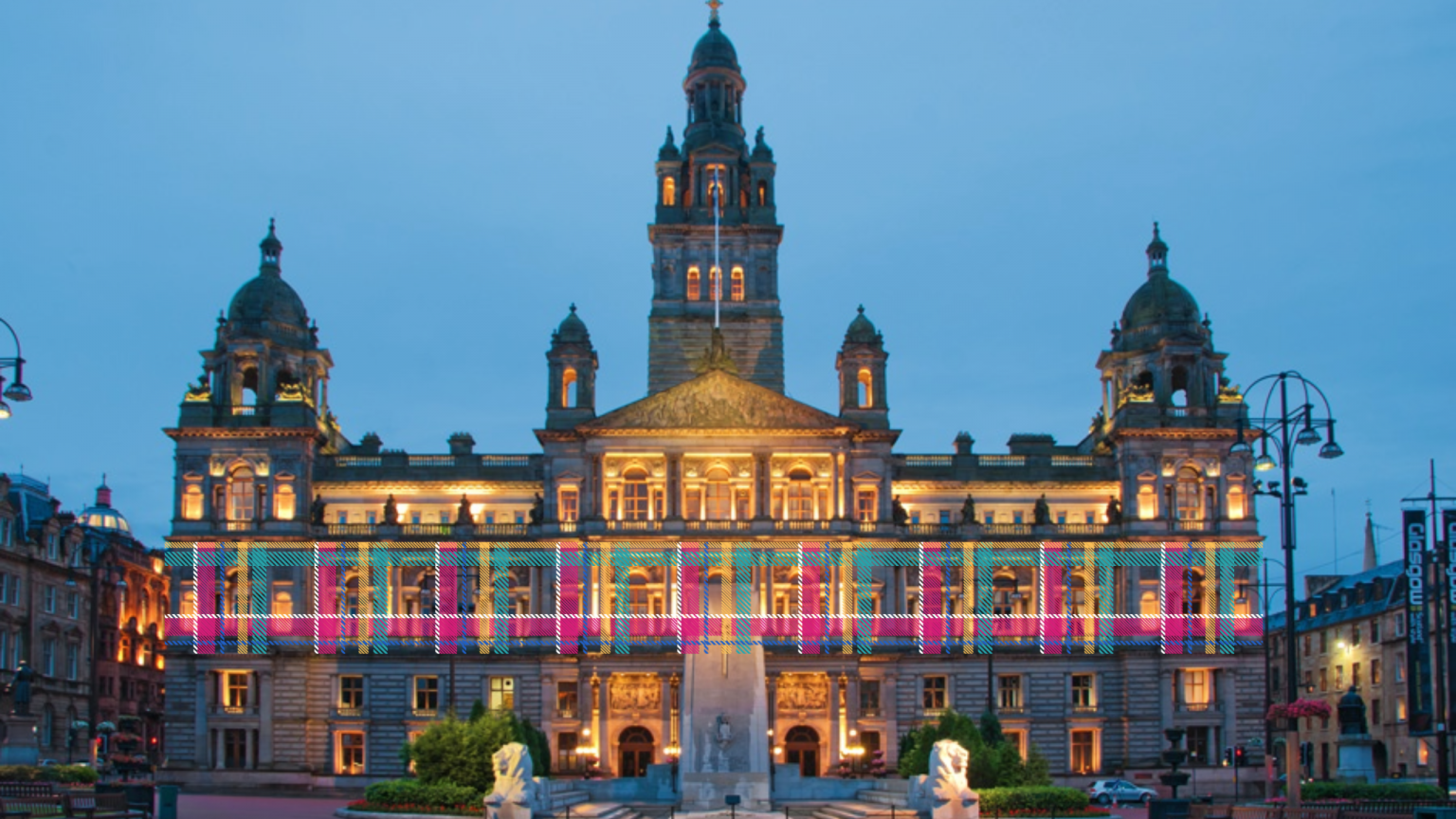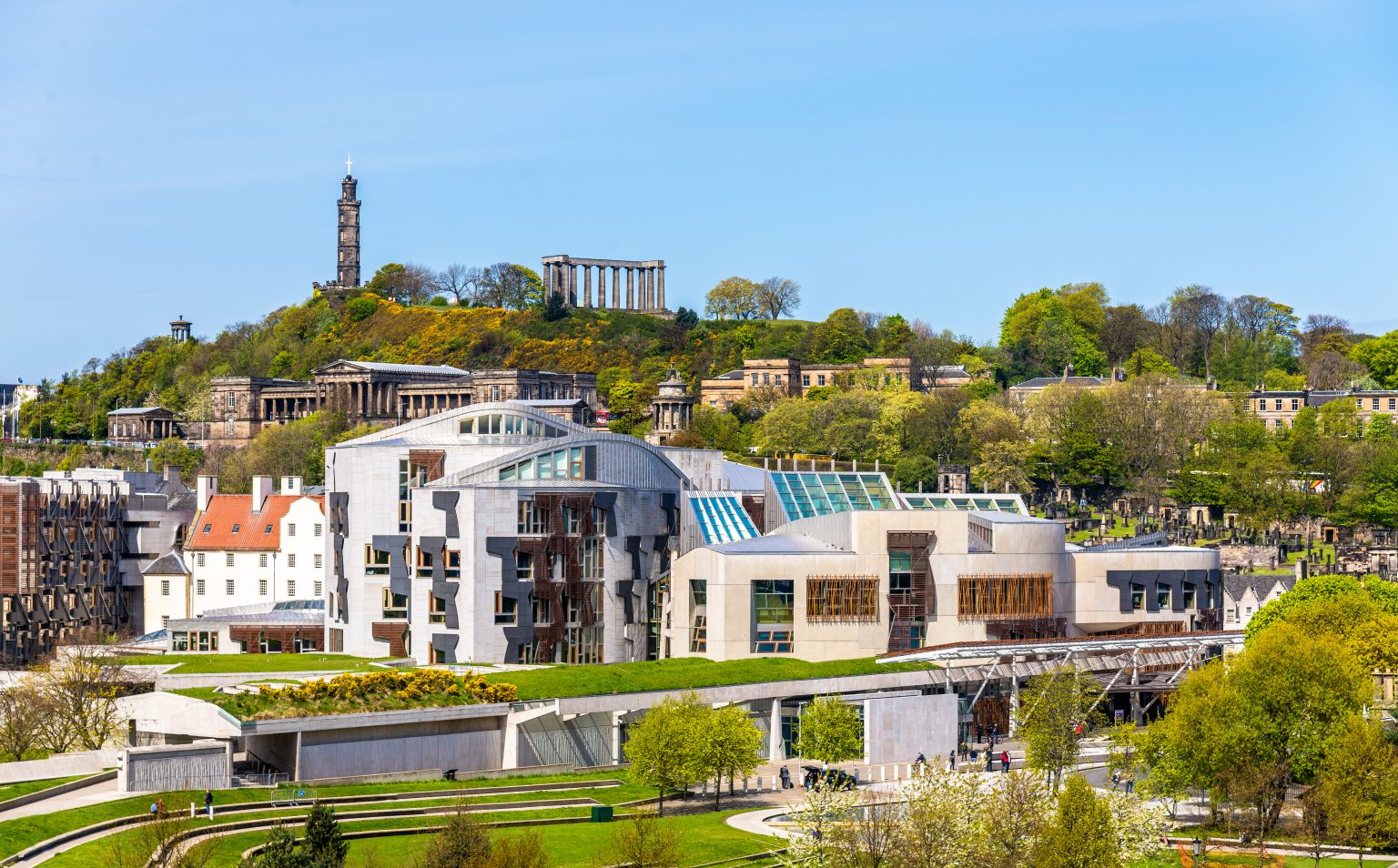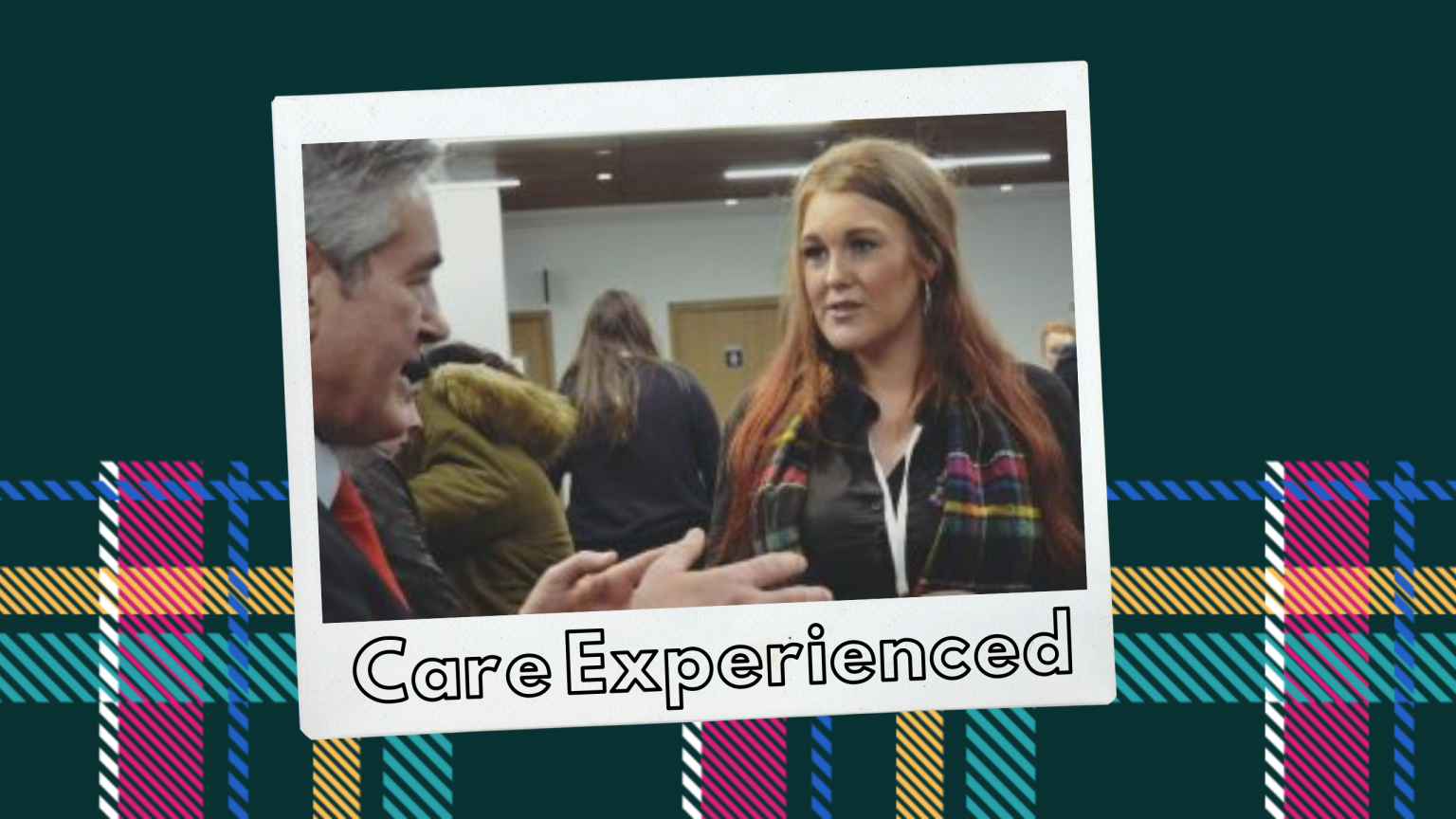Trigger Warning: This piece describes difficult feelings and includes references to conversion therapy.
“No sorry we can’t take her” echoed through the hollow corridors of the foster care system, a chilling refrain that became the anthem of rejection for a disabled child like me. At the tender age of 12, I stumbled into the labyrinth of Scottish foster care, unwittingly embarking on a harrowing odyssey marked by darkness, rejection, and a relentless search for identity.
As well as navigating the complexities of foster care, where stability and acceptance seemed elusive, I found myself grappling with the discovery of my LGBTQ+ status. It was a time of swirling emotions and internal turmoil as I began to understand my attraction to both girls and boys. This was further obscured by my placement in a fervently religious home where prayers sought to exorcise the demons of my LGBTQ+ identity. With the weight of conflicting emotions and societal scorn, I felt trapped in a muddle of self-loathing and despair.
The process of coming to terms with my identity was fraught with uncertainty and fear, especially given the societal and religious contexts within which I found myself. The weight of my truth felt heavy, as I wrestled with questions of acceptance and belonging. When I mustered the courage to confide in my then foster parents, their reaction only added layers to the complexity of my journey. Their prayers seeking to expel what they perceived as demons, cast a shadow over my burgeoning self-acceptance. Instead of finding solace and understanding, I was met with an attempt to suppress and erase a fundamental aspect of who I am. The intersection of my LGBTQ+ identity and the religious beliefs of my foster parents created a clash of values and ideologies that left me feeling isolated and misunderstood.
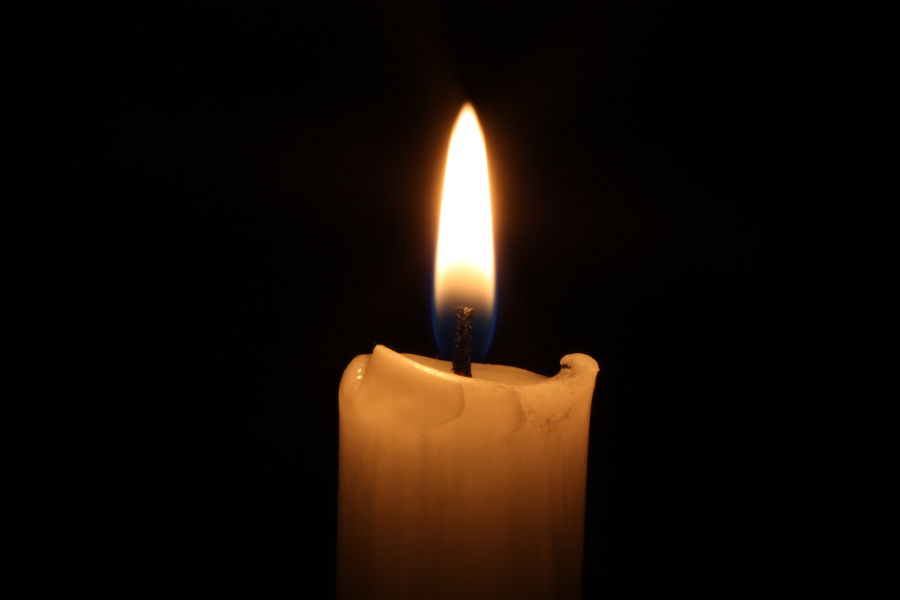
The prayers offered over me were not just words; they carried the weight of societal expectations and religious doctrine, seeking to mould me into someone I was not. At that moment, against the echoes of whispered prayers, I felt the weight of shame and rejection press down upon me, threatening to suffocate the spark of authenticity that flickered within.
Despite the feelings of rejection and misunderstanding, there remained a glimmer of defiance that refused to be extinguished.
My journey of self-discovery continued, fuelled by an unwavering determination to embrace my truth, despite the barriers that stood in my way.
A testament to the resilience of the human spirit and my enduring quest for authenticity and acceptance.
The transition into foster care initiated a cycle of displacement. Over three tumultuous years, I was flung between 6 placements and a group home, each transition shrouded in uncertainty and dread. The instability took its toll, leading me into the cold embrace of psychiatric hospitals, where the darkness of my emotional adversaries mirrored the chaos of my external reality.
A teenager burdened by poor mental health and disability; I became an outcast in the eyes of prospective foster parents. Rejection became my unwelcome companion, a constant reminder of my perceived inadequacies. The void of isolation swallowed me whole, leaving behind a hollow shell of fear and loneliness.
Trust proved to be a fleeting illusion, shattered by the jagged edges of betrayal and deceit. Among peers, confidences were bartered like currency, leaving scars that festered long after the wounds had healed. At 16, I returned to the home of my birth parents—a reunion marked by echoes of distrust, where lingering trauma cast a pall over the fragile semblance of our reconciliation.
Now, at 22, my journey continues. I find relief in counselling, as I confront the ghosts of my past and chart a path toward healing and self-discovery.

Among the painful memories of my time in care, one stands out like a beacon of humiliation: the sight of my meagre belongings stuffed into bin bags as I prepared for school camp. The shame washed over me like a tidal wave. While my peers flaunted shiny new rucksacks, symbols of belonging and acceptance, I stood alone with my tattered bin bag, a stark reminder of my outsider status. I now possess something I once deemed unattainable—a rucksack of my own, a symbol of resilience and the fulfilment of a childhood longing. But most important is the patch I have on my rucksack. The trans flag with my pronouns they/them/theirs in clear bold writing. In its simplicity, I feel the promise of a better tomorrow, where I am seen.
A new job with charity, Talk, Listen, Change offers a glimmer of hope, as I strive to carve out a place for myself in the world by helping others like me. I have a warm, safe bed to sleep in, a sanctuary amidst life’s storms. And in the company of friends who offer unwavering support, I find strength to face the challenges ahead.
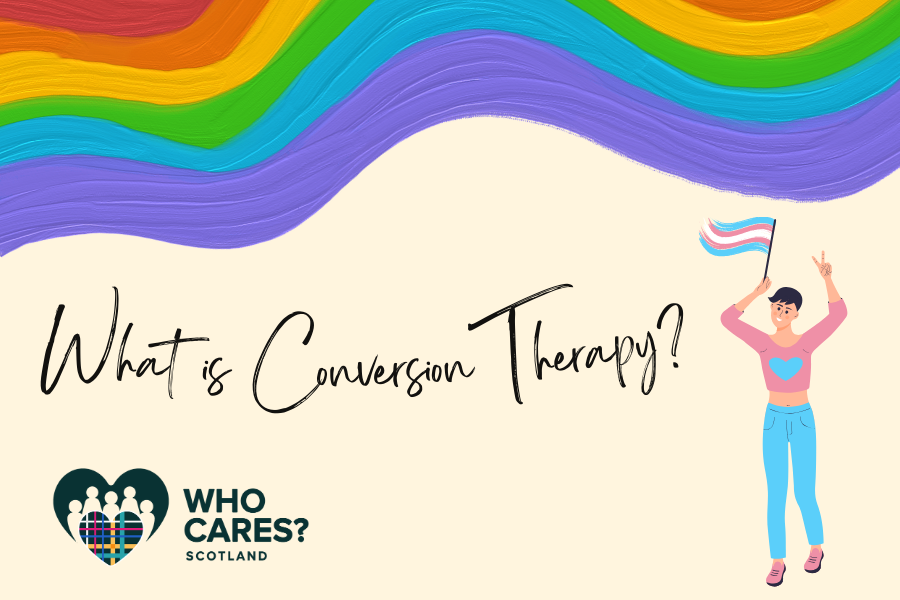
Conversion therapy is any intervention that seeks to change a person’s sexual orientation or gender identity. It is a practice that has been present in societies across the world for hundreds of years and although progress has been made to stop it, it is still legal in the United Kingdom.
Practices include:
- pseudo-scientific counselling sessions
- being induced to ingest “purifying” substances
- being prayed over as a form of “healing” and exorcisms
What is being done to stop this?
The Scottish Government just finished a consultation period that looks to ban the practice. You can read the full consultation here.
There’s more information and support on this topic on the Stonewall and Mermaids websites, as well as suggestions for campaigning against conversion therapy.


